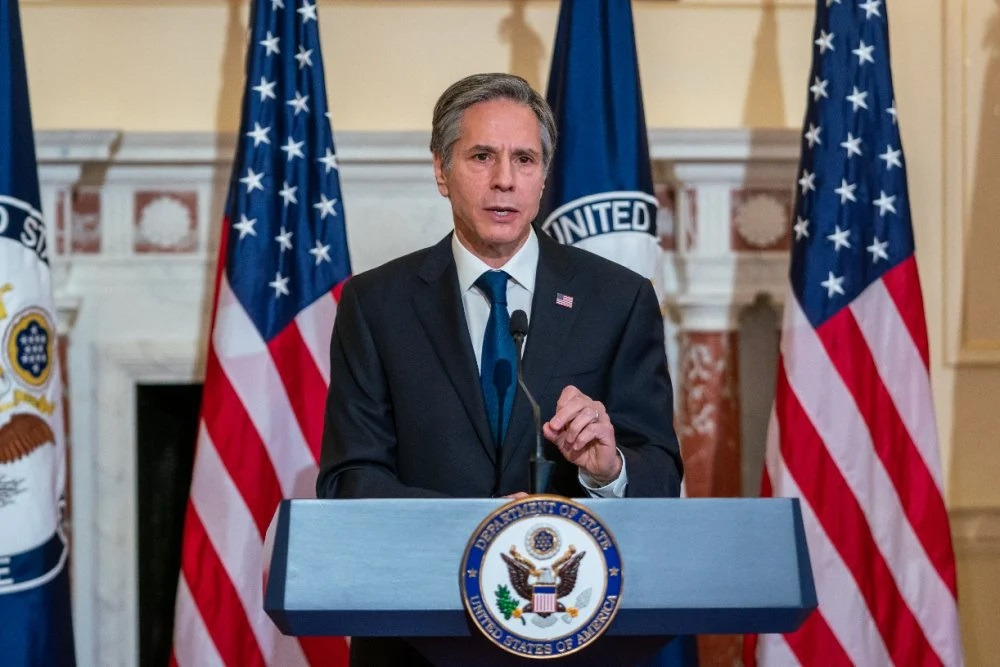Secretary of State Antony Blinken recently finished his first tour of Central Asia. His visit began in Astana, Kazakhstan, where he met with the C5+1 Foreign Ministers during a C5 Ministerial Meeting and ended in Tashkent, Uzbekistan, on March 1. In Uzbekistan, in response to a self-imposed question regarding Russia’s disregard for other countries’ sovereignty, Blinken stated, “That’s exactly why we remain committed to standing for the sovereignty, the territorial integrity, the independence not only of Ukraine, but for countries across Central Asia and, indeed, around the world.”
Although Blinken’s visit may be characterized as a refresh in relations between the United States and Central Asian countries, his rhetoric of pledging support for Central Asia’s sovereignty, territorial integrity, and independence is beating a dead horse.
Blinken’s rhetoric aligns with a 2020 report released by the State Department, United States Strategy for Central Asia 2019-2025: Advancing Sovereignty and Economic Prosperity. The report stressed “border security” and “stabilizing Afghanistan” as crucial policy issues. Additionally, the recently released National Security Strategy (NSS) frames Russia and China as presenting “different challenges” in Central Asia. The document asserts Russia “poses an immediate threat to the free and open international system.” Meanwhile, Central Asia perceives itself to be in an anxiety-inducing situation facing challenges on two fronts with the potential of spillover of terrorism from Afghanistan and Russia’s war against Ukraine.
Militarism has long characterized U.S. involvement in Central Asia, as the United States established military bases in Kyrgyzstan and Uzbekistan during the war in Afghanistan. However, it is not the United States’ responsibility to preserve the sovereignty of all foreign nations. On top of this, Central Asia is not facing the threat of subjugation to a regional hegemon as Russia, China, and to a lesser extent, the EU have stakes in the region. Instead, the United States should prioritize commercial engagement with Central Asia partners and avoid establishing security commitments.
Russia’s influence in Central Asia has waned recently following its invasion of Ukraine; for instance, Moscow has withdrawn troops from the region to serve as reinforcements on the Ukrainian frontlines. On the diplomatic front, Central Asian leaders have protested Russia’s aggression by not voicing support for Vladimir Putin’s invasion, providing humanitarian aid to Ukraine, not allowing its citizens to participate in the war, and accepting Russians fleeing Putin’s mobilization efforts. However, the United States must avoid viewing this as an opportunity to fill the security void left by Russia. Military engagement like the Steppe Eagle exercises in Kazakhstan should be discontinued, given that the United States faces no credible threats in Central Asia and they expose U.S. troops to potential unnecessary blowback.
Additionally, given the war in Ukraine, it is difficult to conceive of a successful Russian assault on the Central Asian countries. Russia is primarily concerned with stability in Central Asia rather than conquering the region by brute force. A Russian invasion would absolutely undermine security in an area that Putin has long viewed as “Russia’s most stable region.”
Instead, the United States should focus on commercial partnerships with the Central Asian countries without expecting political favors that would agitate Russia or China. Central Asian countries clearly do not want to be vassals of Russia or China but do not want to sever ties with these great powers completely. As Kazakh Deputy Foreign Minister Roman Vassilenko explicitly stated, Kazakhstan would not “allow its territory to be used to circumvent sanctions” and would bear that in mind “when it comes to assessing any potential new initiatives.”
Amid sanctions on Russia, Central Asia has shown itself to be open to doing business with new partners, such as the United States. Energy and rare-earth minerals are abundant commodities in Central Asia that the United States needs to maintain a high standard of living. The minerals found in Central Asia, such as neodymium and lanthanum, are used to produce technology such as loudspeakers, hard drives, wind turbines, and television screens. Therefore, the United States should focus on securing these resources while maintaining open and transparent commercial relationships with Central Asian countries and other great powers like Russia and China. In addition, the United States can enable Central Asian countries to adopt more environmentally friendly extraction methods of energy and rare-earth minerals to reduce contributions to climate change. Russia and China would also benefit from these improved methods.
Openness and transparency will also be necessary for future diplomatic actions in Central Asia as well. The United States can lead an initiative for inclusive diplomatic forums and meetings via the C5+1, along with similar groups like “Japan plus Central Asia” and European Union partners. Transparency and openness with the Russia and China-led Shanghai Cooperation Organization will be critical to incorporating China and Russia into future discussions and negotiations. Red lines and expectations should be established and abided by to address sources of friction between the great powers.
The United States must focus on concrete, narrow interests in Central Asia that are realistically attainable. Central Asian countries, now more than ever, are looking to expand their commercial partner base amid the Russo-Ukrainian conflict. Peaceful cooperation should be the U.S. strategy, not unnecessary entanglement.
Source: nationalinterest


